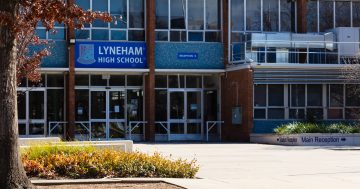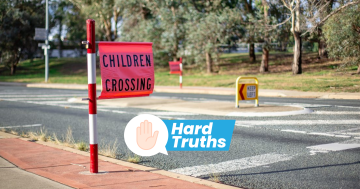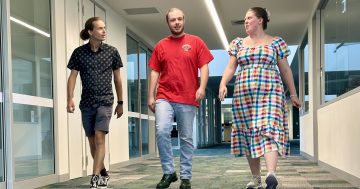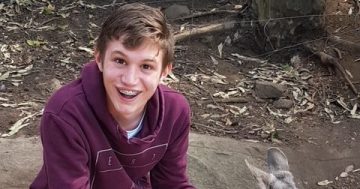
New documents released under Freedom of Information show the extent of the violence at Calwell High School. Photo: Screenshot.
The violence at Calwell High School was so frequent and extensive that the school was partially or fully locked down 10 times in one term before the workplace safety regulator barred students from campus earlier this year.
New documents released to the Canberra Liberals under freedom of information show that on one occasion students threw bricks, abused, threatened and swore at staff. On the same day, a student pulled a Stanley knife out of their bag and threatened another student with it.
Later that month, a student tried to steal a watch and then assaulted a peer.
In another incident, after being caught vaping in the bathroom, a student kicked a glass door so hard that it shattered. That same student also became abusive and was swearing.




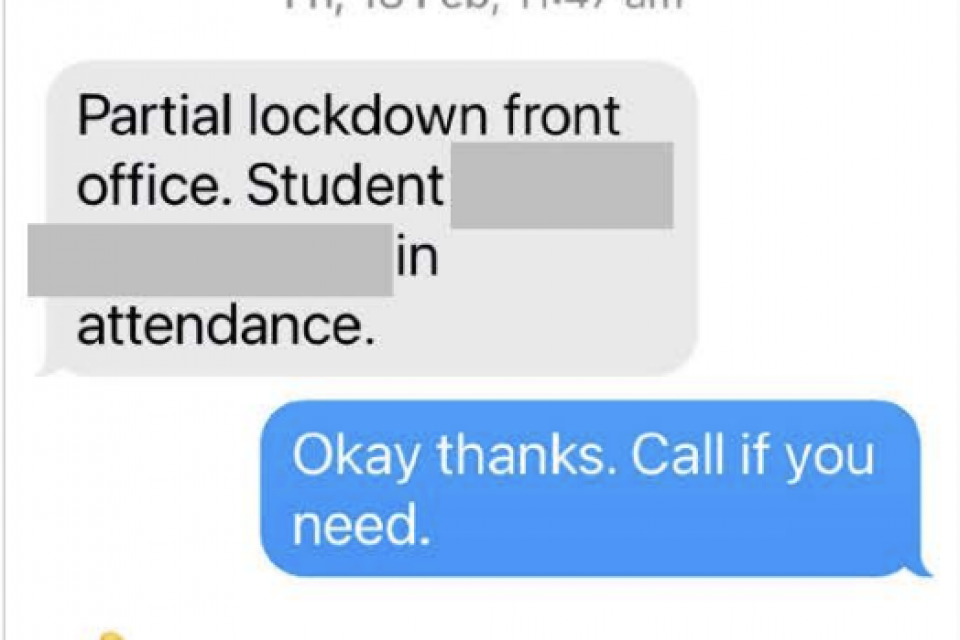




Only a few days later, police were called to assist after the parent who was called in to pick up a student following multiple fights. That parent later became verbally abusive and threatening towards staff members.
Principal Megan Altenburg and school leaders also attempted to engage external support in order to manage behavioural issues at the school, but emails between them and the Education Directorate show there were concerns about this.
This was later described as an “emergency reboot plan”.
Text messages show Ms Altenburg requested “something for staff to debrief with if possible” and for employment assistance to be on site.

Emails show how concerned Ms Altenburg became. Photo: Screenshot.
The school principal later described dealing with parents as “getting into the hysterical”.
Then, on Thursday, 24 March, a mob of 30 to 40 students became involved in a frenzy following an initial physical altercation in one class. They were swearing, kicking doors in and ignoring teachers. The school was then put into full lockdown and police had to be called.
Staff members attempted to stop the students verbally and others became involved physically. Following this, one teacher became the focus of the frenzy and was injured.
Minister for Education Yvette Berry was briefed on this incident the following day. Education Directorate director-general Katy Haire was then sent a brief two days later, although she expressed concern about the time it took for her to be notified.
“I agree that this is a very disturbing incident and that we both needed to know about it a lot sooner, and I endorse your proposal to review processes tomorrow,” Ms Haire wrote.
She said in future, she would expect a phone call on the day it occurred.

Minister for Education Yvette Berry faced and survived a no-confidence motion in the ACT Legislative Assembly. Photo: Lottie Twyford.
Another senior bureaucrat raised a concern of ‘de-sensitivity’ to such incidents, while another directorate official questioned whether the school could be shut down following this incident.
Plans were put in place to allow the school to “refocus”. But in the days following, WorkSafe ACT attended the school at the request of the teachers union which had raised concerns about low staffing levels.
An email dated 31 March showed Calwell High School had a “significantly lower trend” of staff absences than other schools.
Nevertheless, the Territory’s work safety regulator found an environment rife with bullying, fear and violence.
Students were barred from campus from 4 April until 16 May after a prohibition notice was eventually lifted.
At the time, parents were told the remote learning period was due to COVID-19. They were not initially told of the violence issues identified by WorkSafe ACT.

Opposition spokesperson for education Jeremy Hanson said the issues at Calwell High School demonstrated failings on behalf of the directorate. Photo: Region Media.
Opposition spokesperson for education Jeremy Hanson said the freedom of information documents demonstrated the extent of the issues over a long period of time at Calwell High School.
“The fact that this was not addressed sooner demonstrates an abject failure by the minister and the directorate to address and prevent violent incidents when they had ample warning to do so,” Mr Hanson said.
Mr Hanson said the opposition had already called for a review into school management and bullying and violence last year, but the ACT Government had rejected that.
Following those revelations, a special purpose review of the school was announced in late May.
That review – which was published yesterday – noted the school was dealing with high staff turnover and low levels of experience, which the panel concluded had led to a loss of strategic focus.
This had also occurred due to a focus on wellbeing issues rather than teaching and learning.
It also found that the high frequency of low-level negative student behaviour in class and during unstructured times was impacting teaching and learning.
However, the review identified that a majority of staff, students and parents interviewed said they felt safe at the school. They said the public image of the school did not match their experience.














